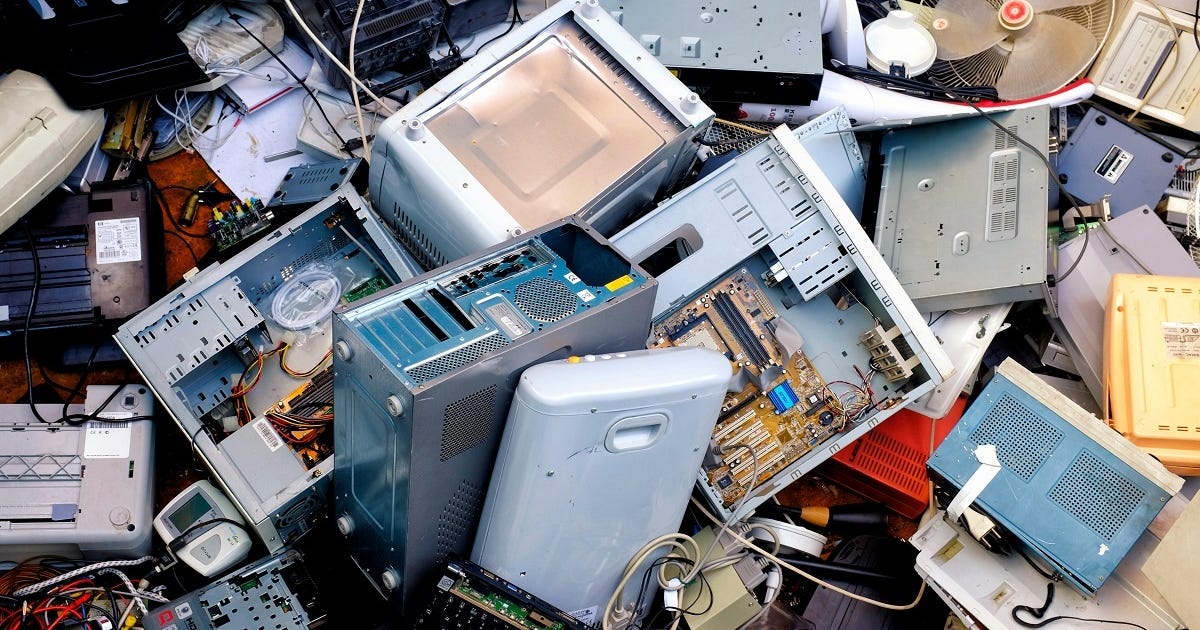Scientists develop high-performance memory devices that dissolve in water
Electronic devices power everyday life, from smartphones to medical sensors. Yet, as these gadgets grow in number, so does the mounting challenge of electronic waste, or e-waste. Physically transient electronics—devices…

Scientists have developed high-performance transient electronics capable of dissolving naturally, promising environmental sustainability. (CREDIT: Alamy)
Electronic devices power everyday life, from smartphones to medical sensors. Yet, as these gadgets grow in number, so does the mounting challenge of electronic waste, or e-waste. Physically transient electronics—devices designed to degrade safely after use—have emerged as an innovative solution, offering promise for both the environment and human health.
Researchers from the Korea Institute of Science and Technology (KIST) recently made a notable advancement in transient electronics. The team, led by Dr. Sangho Cho and Dr. Yongho Joo, created a polymeric material that effectively stores data and naturally dissolves in water within days. This development blends high-tech efficiency with environmental responsibility, potentially reshaping how future electronics are made.
Breaking Barriers with Molecular Design
Traditional electronic devices often rely on durable materials that resist degradation. However, durability means these devices linger long after use, contributing significantly to environmental pollution. To counter this, scientists have turned toward materials that are both biodegradable and highly functional.
Organic materials known as memristors are particularly promising due to their ability to mimic brain functions, opening doors to advanced computing applications.
At KIST, researchers developed a unique polymer, called PCL-TEMPO, combining a biodegradable polymer (polycaprolactone, or PCL) with an organic molecule known as TEMPO. This molecule excels at storing electrical data, creating a single, multifunctional system.
Dr. Cho explained the significance, noting, "This achievement is technologically significant as it marks the first example of integrating physical self-destruction into a high-performance organic memory device."
Related Stories
Outstanding Performance, Exceptional Sustainability
Devices created with this polymer showed remarkable capability in storing data. In tests, the new memory device reliably distinguished between different states of electrical signals over one million cycles, retaining data for more than 10,000 seconds. Remarkably, the device also remained stable after 250 repeated cycles of writing and erasing data and survived extensive bending—over 3,000 cycles—without losing performance.
Unlike previous attempts at transient electronics, this device combines high performance with genuine biodegradability.
Traditional degradable electronics often compromise on electrical performance, durability, or mechanical flexibility. In contrast, the KIST device fully dissolves in pure water at room temperature, leaving no harmful residue behind.
Moving Towards Bio-Compatible Applications
The potential of physically transient electronics extends far beyond environmental benefits. Wearable and implantable medical devices are among the most promising applications. Biocompatibility—the ability to function safely within the human body—is a crucial consideration, and this material meets that requirement effectively.
Medical applications include devices like temporary diagnostic sensors, therapeutic implants, or disposable monitoring systems. Such devices could dissolve naturally inside the body after their job is done, eliminating the need for additional surgeries to remove them. This advancement reduces patient discomfort and healthcare costs significantly.
Moreover, the device’s dissolvable timing can be precisely controlled by adjusting the thickness and composition of its protective layer. Once this protective coating wears away, the device naturally disintegrates completely in water within approximately three days.
Future Implications: Environment and Technology
Transient electronics also carry enormous potential in sustainability efforts. They can significantly decrease e-waste, a growing environmental concern globally.
Everyday devices such as wearable health monitors, smart patches, and temporary sensors used in military reconnaissance could benefit greatly. Their environmentally friendly decomposition supports global strategies aimed at achieving carbon neutrality.
Looking ahead, Dr. Cho emphasizes ongoing developments: "In the future, we aim to evolve this into an 'intelligent transient electronic device' by incorporating self-healing and photo-responsive capabilities, accelerating the commercialization of next-generation bioelectronics and eco-friendly devices."
The groundbreaking research at KIST exemplifies the future direction of electronics—devices that seamlessly merge technological excellence with sustainability. By bridging high-performance computing and biodegradability, transient electronics could soon redefine what it means to be truly smart technology.
Research findings are available online in the journal Angewandte Chemie International Edition.
Note: The article above provided above by The Brighter Side of News.
Like these kind of feel good stories? Get The Brighter Side of News' newsletter.



